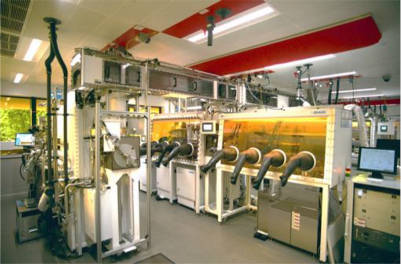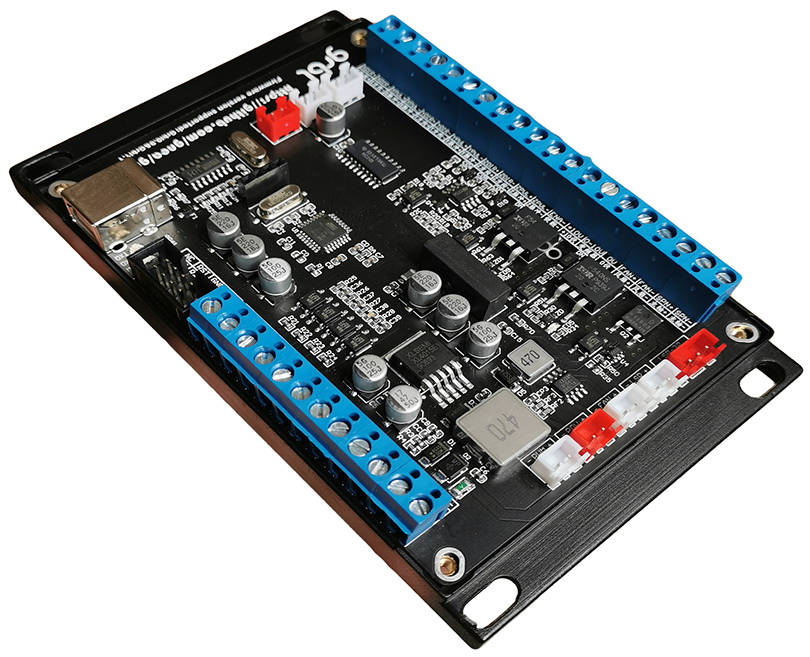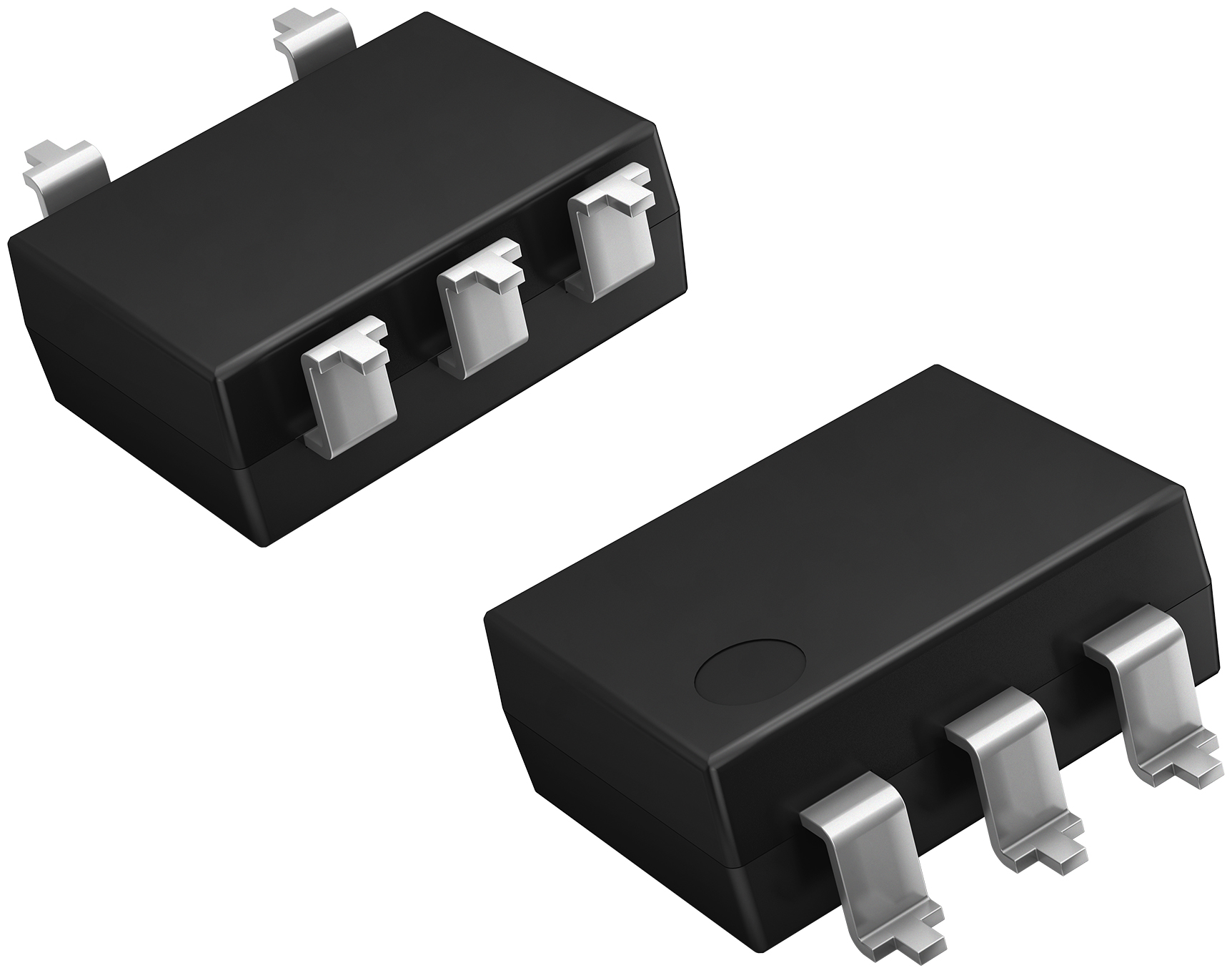
Fine control of halide content in the cell is used to widen the bandgap, a self-assembling mono-layer is used for hole transport, and the perovskite absorber is passivated to reduce non-radiative losses.
Similar passivation is used on the second narrow bandgap perovskite absorber for the other cell in the tandem stack.
Four-source vacuum deposition was used to create the research cell, at Cambridge’s ‘Ambient Processing Cluster Tool’ (right) – the object around which the symposium is centred.
Other papers at the symposium include one on a perovskite x-ray that could reduce exposure in medical use. The pixels are self-powered micro photovoltaics and production could be far less expensive than more conventional detector arrays.
Another covers blue-emitting perovskite LEDs, which are trailing the ~20% efficiency of green and red perovskite LEDs, looking into the plagues of ion migration, colour instability and short life that burden the technology.
This does not mean that the whole event is about perovskites. Amongst the dozen or so submissions, for example, is a paper that delves into the problems of otherwise promising nickel-rich cathodes in lithium ion cells. Paragraf’s graphene Hall effect sensors for low and high temperature will also be covered.
More on the Cluster Tool
 The Ambient Cluster is a custom-made research tool with ten inter-connected glove box modules that offer multiple vacuum-based as well as liquid-based deposition tools (left).
The Ambient Cluster is a custom-made research tool with ten inter-connected glove box modules that offer multiple vacuum-based as well as liquid-based deposition tools (left).
It was funded by the The Henry Royce Institute, which is a EPSRC-funded materials research organisation based at Manchester University, with a branch at Cambridge’s Maxwell Centre called Cambridge Royce.
As well as Paragraf’s research, other commercial users of the cluster include Polysolar which is working on all-solution-processed organic photovoltaic devices – it has also payed for a spray coating machine held in the Maxwell Centre.
Find ‘Energy and Light III’: Cambridge Cluster Tool Symposium here. It will be held at the Cavendish Laboratory on 27th October.
The Ambient Cluster page is here and the Henry Royce Institute here







